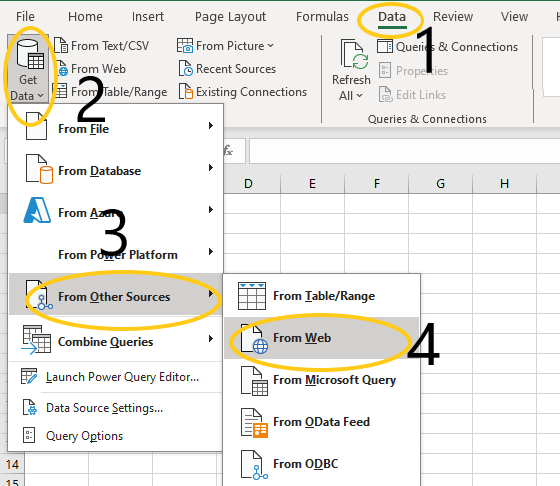If you work with data, chances are you’ve come across CSV files. CSV (Comma Separated Values) files are a popular format for storing and exchanging data due to their simplicity and compatibility with various software applications.
However, as your data grows, you may find that CSV files are no longer the most efficient way to store and manage your data. This is where databases come in. Databases offer a more organized and structured way to store and retrieve data, making it easier to manage and analyze large datasets.
In this guide, we’ll walk you through the process of converting CSV files to databases, so you can make the most out of your data.
Why Convert CSV to Databases?
CSV files are great for storing and exchanging data, but they have their limitations. As your data grows, CSV files can become difficult to manage and analyze. Here are some reasons why you may want to consider converting your CSV files to databases:
Improved Data Organization and Structure
Databases offer a more organized and structured way to store data. Unlike CSV files, databases have tables, columns, and rows, making it easier to organize and retrieve data. This structure also allows for more efficient data analysis and manipulation.
Faster Data Retrieval
As your data grows, retrieving data from CSV files can become time-consuming. Databases use indexing and other optimization techniques to retrieve data faster, making it easier to work with large datasets.
Better Data Security
CSV files are not the most secure way to store sensitive data. Databases offer more robust security features, such as user authentication and access control, to protect your data from unauthorized access.
Converting CSV to Databases: A Step-by-Step Guide
Now that you understand the benefits of converting CSV files to databases, let’s dive into the process. We’ll be using MySQL, a popular open-source relational database management system, for this guide. We also included some examples below to do this task with Python and targeting any database.
Step 1: Create a Database
The first step is to create a database where you’ll store your data. To do this, open the MySQL command-line client and enter the following command:
CREATE DATABASE database_name;
Replace “database_name” with the name you want to give your database. This will create a new database with the specified name.
Step 2: Create a Table
Next, you’ll need to create a table within your database to store your data. Tables are used to organize data into columns and rows. To create a table, use the following command:
CREATE TABLE table_name ( column1 datatype, column2 datatype, column3 datatype, …. );
Replace “table_name” with the name you want to give your table. You’ll also need to specify the columns and their data types within the parentheses. For example, if you have a CSV file with columns for “Name”, “Age”, and “Occupation”, your command would look like this:
CREATE TABLE users ( Name VARCHAR(255), Age INT, Occupation VARCHAR(255) );
This will create a table called “users” with three columns: “Name” (a string of up to 255 characters), “Age” (an integer), and “Occupation” (a string of up to 255 characters).
Step 3: Import CSV Data into the Table
Now that you have a database and a table, it’s time to import your CSV data into the table. To do this, you’ll need to use the LOAD DATA INFILE command. This command allows you to load data from a CSV file into a table.
LOAD DATA INFILE ‘file_path’ INTO TABLE table_name FIELDS TERMINATED BY ‘,’ ENCLOSED BY ‘”‘ LINES TERMINATED BY ‘\n’ IGNORE 1 ROWS;
Replace “file_path” with the path to your CSV file, “table_name” with the name of your table, and make sure to specify the correct field and line terminators for your CSV file. The IGNORE 1 ROWS command is used to skip the first row of your CSV file, which usually contains column headers.
Step 4: Verify the Data
Once the import is complete, you can use the SELECT command to verify that your data has been successfully imported into the table. For example, to view all the data in the “users” table, you would use the following command:
SELECT * FROM users;
This will display all the data in the “users” table.
Step 5: Create Indexes (Optional)
Indexes are used to speed up data retrieval from databases. They work by creating a pointer to the data, making it faster to retrieve data from a table. If you have a large dataset, it’s recommended to create indexes on columns that are frequently used in queries.
To create an index, use the following command:
CREATE INDEX index_name ON table_name (column_name);
Replace “index_name” with the name you want to give your index, “table_name” with the name of your table, and “column_name” with the name of the column you want to create an index on.
AmetricX to Database with Pandas
For more information read the Generate API Key documentation
Navigate to settings from the top bar

Under API KEYS click on Add Api Key

Click on Add Api Key to create a new key).The actual key will display only once and cannot be retrieved afterward.

For additional details, read the CSV File Exchange API documentation
import pandas as pd
file_id = <FILE ID> # See examples to get the FILE ID https://docs.ametricx.com/file_api/reference/#curl-example_1
df = pd.read_csv(
'https://trial.ametricx.com/api/v1/file/download/{file_id}'.format(file_id=file_id),
storage_options={'Authorization': 'Bearer <YOUR API KEY>)
We use sqlalchemy to create and “engine” to pass to pandas
import sqlalchemy as sa
engine = sa.create_engine('postgresql://ametricx:ametricx@localhost:5432/ametricx')For this example, we append the data to an existing table. Please read the pandas.Dataframe.to_sql documentation for additional details
df.to_sql('metrics_store', engine, if_exists='append', index=False)import pandas as pd
import sqlalchemy as sa
file_id = FILE_ID # See examples to get the FILE ID https://docs.ametricx.com/file_api/reference/#curl-example_1
df = pd.read_csv(
"https://trial.ametricx.com/api/v1/file/download/{FILE_ID}".format(FILE_ID=FILE_ID),
storage_options={'Authorization': 'Bearer {API_KEY}'.format(API_KEY=API_KEY)})
engine = sa.create_engine('postgresql://ametricx:ametricx@localhost:5432/ametricx')
df.to_sql('metrics_store', engine, if_exists='append', index=False)Conclusion
Converting CSV files to databases can help you better manage and analyze your data. By following the steps outlined in this guide, you can easily convert your CSV files to databases and take advantage of the benefits they offer.
Remember to regularly back up your databases to avoid data loss and always test your queries before running them on large datasets. With the right tools and techniques, you can make the most out of your data and drive better business decisions.








